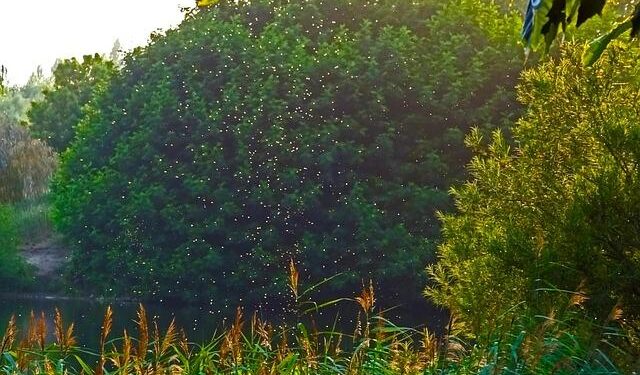Iceland, long known for its pristine landscapes and absence of mosquitoes, has recorded its first-ever presence of the notorious insect, according to a recent report by CNN. This unprecedented discovery marks a significant shift for the island nation, traditionally free from the pests that plague much of the world. Experts are now examining what this development could mean for Iceland’s unique ecosystem and its residents.
Iceland Detects First Mosquitoes Raising Public Health Concerns
Iceland’s pristine environment faces an unexpected challenge as entomologists confirm the discovery of mosquitoes for the first time in the island nation’s modern history. This unprecedented finding has raised alarms across scientific and public health sectors, given that Iceland’s cold climate and isolated ecosystem have long kept these insects at bay. Experts warn that the presence of mosquitoes could introduce new health risks, including potential transmission of mosquito-borne diseases previously unseen in the country.
Authorities are already mobilizing resources to monitor and control the mosquito population. Public health officials emphasize the importance of early detection and community awareness to mitigate possible impacts. Key strategies being discussed include:
- Enhanced surveillance programs during warmer months
- Public education campaigns on bite prevention
- Research on Iceland’s evolving climate factors contributing to this ecological shift
| Potential Impact | Details |
|---|---|
| Health | Risk of mosquito-borne illnesses such as West Nile Virus |
| Ecology | Disruption of native species and ecosystems |
| Tourism | Possible decline due to insect nuisance concerns |
Experts Analyze Potential Ecological Impact of Mosquito Arrival in Iceland
Specialists from various ecological and entomological fields have quickly mobilized to assess the consequences of mosquito colonization in Iceland, a country that has historically remained untouched by these insects. While mosquitoes are often regarded merely as nuisances, experts warn that their presence could disrupt local ecosystems in unforeseen ways. The introduction of a new species like Culex pipiens could alter food webs, affecting not only bird populations that feed on native insects but also other invertebrates through increased competition for resources.
To forecast possible changes, researchers are compiling data on the mosquitoes’ breeding habits and potential predators in Iceland’s unique environment. Preliminary models indicate potential outcomes such as:
- Increase in disease vectors: Raising concerns over new public health challenges.
- Alteration in predator-prey dynamics: Affecting native insect populations and bird species.
- Impact on freshwater ecosystems: Mosquito larvae competing with native aquatic species.
A comparative analysis table below illustrates ecological factors from similar northern regions where mosquitoes have recently established, helping scientists anticipate Iceland’s situation:
| Region | Mosquito Species | Reported Impacts | Timeframe Since Arrival |
|---|---|---|---|
| Faroe Islands | Culex pipiens | Minor disruption in insect diversity | 5 years |
| Greenland | Aedes nigripes | Increased bird predation on mosquito larvae | 3 years |
| Northern Scotland | Culiseta annulata | Local shifts in freshwater invertebrates | 10 years |
Recommendations for Monitoring and Controlling Mosquito Populations in Iceland
To effectively manage this unprecedented appearance of mosquitoes in Iceland, authorities must adopt a multi-faceted approach focused on vigilant monitoring and proactive intervention. Surveillance programs should utilize traps strategically placed in both urban and rural areas to track mosquito populations continuously. Incorporating advanced tools such as drone-assisted mapping and remote sensing will enhance detection efforts, especially in hard-to-reach wetlands and breeding sites. Collaborations with academic institutions can facilitate genetic studies to understand mosquito adaptation in cold climates, enabling early identification of potentially invasive species.
Control strategies should emphasize environmentally responsible measures tailored to Iceland’s unique ecosystem. These include:
- Introducing natural predators such as certain fish species in stagnant water bodies
- Implementing targeted larvicides during breeding season with minimal ecological disruption
- Enhancing public awareness campaigns focusing on reducing standing water in residential areas
| Monitoring Method | Purpose | Frequency |
|---|---|---|
| COâ‚‚ Traps | Attract adult mosquitoes for density assessment | Weekly |
| Larval Sampling | Identify breeding hotspots in water bodies | Bi-weekly |
| Genetic Analysis | Track mosquito species and monitor adaptation | Monthly |
Closing Remarks
As Iceland confronts the arrival of its first mosquitoes, a species long absent from its unique ecosystem, scientists and residents alike are closely monitoring the potential environmental and public health implications. While the full impact remains uncertain, this development highlights the broader effects of climate change and shifting habitats in previously inhospitable regions. Ongoing research will be crucial in understanding how these tiny newcomers may alter life in Iceland moving forward.
















